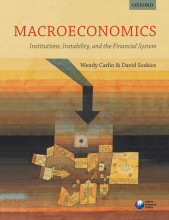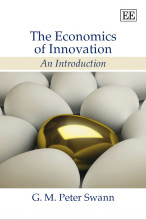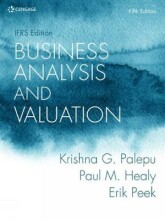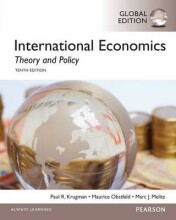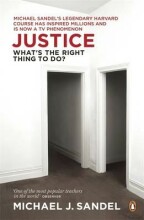Summary: Macroeconomics Institutions, Instability, And The Financial System | 9780199655793 | Wendy Carlin, et al
- This + 400k other summaries
- A unique study and practice tool
- Never study anything twice again
- Get the grades you hope for
- 100% sure, 100% understanding
Read the summary and the most important questions on Macroeconomics Institutions, Instability, and the Financial System | 9780199655793 | Wendy Carlin; David W. Soskice
-
5 Money, banking and the macro-economy
-
5.2.1 Money
This is a preview. There are 1 more flashcards available for chapter 5.2.1
Show more cards here -
What is the double coincidence of wants?
Where two parties each have a good or service that the other party wants. -
What are the advantages of money?
Money enables specialization and efficiency because it cuts down on the time spent obtaining information about the relative costs and profitability of different ventures, and on finding people with whom one can trade. -
5.2.2 Money supply and money demand
This is a preview. There are 2 more flashcards available for chapter 5.2.2
Show more cards here -
What is narrow money?
Notes and coins and the reserve balances of banks held at the central bank, M0. -
Why does the equivalence of central bank money and commercial bank money break down during a financial crisis?
The money issued by the central bank in the form of notes and coins is legal tender, which means that it cannot be legally be refused in a settlement of debt. -
What does the amount of reserves reflect?
The decisions by banks about theirprudent ratio of reserves to deposits. Reserves provide banks with the liquidity they need in order to settle balances with other banks and to pay customers who want to withdraw deposits. -
What is a bond?
A financial instrument sold by an institution wishing to borrow to an investor wishing to lend. -
On what does it depend how much money households and firms will hold?
1. As their income increases, households will want to carry out more transactions, so will hold more money (deposits).
2. A higher interest rate will make buying bonds more attractive and will reduce the proportion of income they wish to hold in deposits. -
What is the function of the demand for money?
M_D/P = f(y,i; phi)
y output (depends positively)
i nominal interest rate (depends negatively)
phi structural changes in the financial sector -
5.2.3 Money, banks and the 3-equation model
-
Explain the 3-equation model and the money demand with inflation zero
Take the example that the central bank wishes to keep the economy at equilibrium output. Given the mark-up of the lending rate over the policy rate, the central bank sets the policy rate at r_P such that r = r_S is the stabilizing interest rate. -
5.3.1 The central bank sets the policy interest rate
This is a preview. There are 3 more flashcards available for chapter 5.3.1
Show more cards here -
How does the central bank set the policy rate?
An independent, inflation-targeting central bank has direct control over the policy rate.
- Higher grades + faster learning
- Never study anything twice
- 100% sure, 100% understanding
Topics related to Summary: Macroeconomics Institutions, Instability, And The Financial System
-
Money, banking and the macro-economy - A modern financial system - The mark-up of the lending rate over the policy rate
-
A modern financial system - Banks, credit constraints and collateral - Credit risk, information problems and credit constraints
-
Money, banking and the macro-economy - A modern financial system - The role of banks in a fractional reserve system
-
Money, banking and the macro-economy - A modern financial system - Governance arrangements: banks, central bank and government
-
Money, banking and the macro-economy - Banks and macro stabilization
-
The financial sector and crises - Bank behavior, cycles and crises - Bank behavior and the macro-economy
-
The financial sector and crises - Bank behavior, cycles and crises - Financial crises and their cost to the economy
-
The financial sector and crises - Basic mechanisms - Asset price bubbles
-
The financial sector and crises - The housing feedback process and the 3-equation model
-
The financial sector and crises - The bank leverage-centered feedback process - Investment bank behavior and leverage
-
The financial sector and crises
-
Growth, fluctuations and innovation - Short- and medium-run macro models and growth theory
-
Growth, fluctuations and innovation - Growth concepts and useful tools
